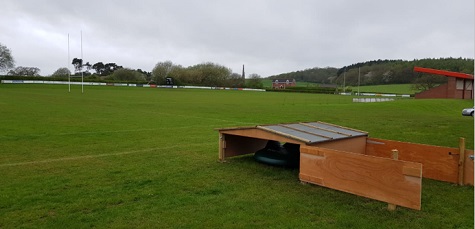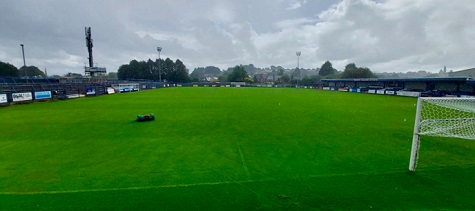Robotic mowers have been around for a number of years, with the very first patented robotic mower, the MowBot, introduced and patented by S Lawrence Bellinger in 1969. However, we had to wait another 23 years until 1992 before we saw the first fully solar powered robotic mower patented by André Collens and sold to Husqvarna, which came to market in 1995.
Since then robotic technologies having been moving at a fast pace with many companies taking the opportunity to produce more advanced models that come in all shapes, sizes and configurations.
One such company that found a niche market is Belgian firm Belrobotics, now owned by Yamabiko. Belrobotics has been in existence for around 25 years and in that time has established a foothold in number of European countries.
There are thousands in use all over Europe. They are used widely in football clubs, business parks, public parks, private large gardens, sports pitches and when paired with Belrobotics ballpickers at driving ranges.
Just over seven years ago, Belrobotics formed a partnership with AMS Robotics.

AMS Robotics is the UK's official distribution for the Belrobotics products. On top of their sales they offer a unique contract based robotic maintenance service solution for turf care. With the aim of building on its success in the golf industry, AMS Robotics continues to expand into sport pitch/field care.
Both Halesowen FC and Halesowen RFC are amongst the first community clubs to invest in the use of the Big Mow robotic mower.
Belrobotics BigMow Connected benefits from a large working area capacity of 24,000 m2. It is virtually silent and it has five sonars used to navigate its surroundings and to perform effective obstacle avoidance. Customers can manage their fleet directly from their phone, this allows customers to programme mowing schedules and monitor performance.
With hundreds of these robots keeping turf healthy across the UK, the company says a single BigMow robotic mower can mow a pitch 5 to 7 times per week and imposes no stress to the grass due to its lightweight design. It has 15 blades that trim the top of the grass into tiny clippings, which then decompose quickly acting as a natural fertiliser. The manufacturer emphasises that this in turn reduces the need for chemical fertilisers and frees up personnel to focus on other aspects of pitch care. The BigMow's manicure style mulching also means there is no green waste to collect, store or remove.
AMS say that their automated maintenance service solution requires no capital outlay and is run on a monthly service contract. Sport facilities with limited resources can also benefit, they say, due to the availability of turf care grants, meaning cash strapped facilities can also reap the benefits that robotic mowers provide.

Big Mow at Halesowen FC
A typical robot mower installation involves the install of a docking station and a perimeter wire. The docking station is where the robot goes to recharge and the perimeter wire emits a magnetic field acting as an underground boundary to guide the robot.
However, the company say they are developing a new RKT GPS system due out due out April 2021, which will also potentially double operation ranges and bring accuracy down to within 2cm, reduce minimum cut height down to 15mmm and also enable patterns such as stripes.

Trial work to evaluate the Bigmow automatic lawnmower was conducted at the Sports Turf Research Institute (STRI) throughout the spring, summer and autumn of 2010. Bigmow was compared with a traditional cylinder mower of the type used to mow football pitches. Assessments such as visual turf quality and colour, live ground cover, cleanness, and evenness of cut and weed content were made throughout the trial period. Bigmow compared favourably with the cylinder mower in terms of overall turf quality. In terms of labour time, Bigmow required significantly less labour time than the cylinder mower.
Since that time the company say they have continued to improve the performance and market the benefits these type of mowers offer – concentrating on the labour savings that can be made.
Halesowen FC have had a Big Mow robotic mower for two years and use it all year round. The lightweight robot reduces stress of cutting in the wetter months keeping pitches game ready at all times. It usually takes about two and half days to cut the whole pitch the club’s director of football says it is a good tool for saving labour time during these two periods and allows their groundsman to get on with other work.
Halesowen Town FC have said they would like to put on record how satisfied they are with the robotic mower and the overall service of the AMS team. The time and effort saved has been huge they say, and they are impressed with quality of the cut, relating how it has caught of the imagination of all the supporters and everyone involved with the club. Halesowen also commented on how easy it was to install and say they would recommend it to any football club looking to improve their playing surface.
The use of machinery such as this is clearly going to become more popular in future years. It will be only a matter of time before we see this technology become the norm with many different formats of robotic devices developed to do many of our daily chores.
For our sector, there’s little doubt we will see many more robotic mowers being used to maintain grass surfaces on our community playing fields, parks and open spaces.